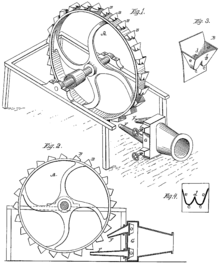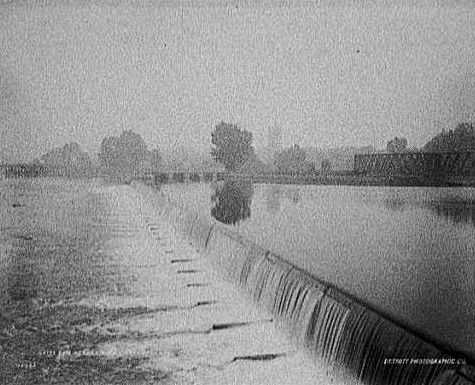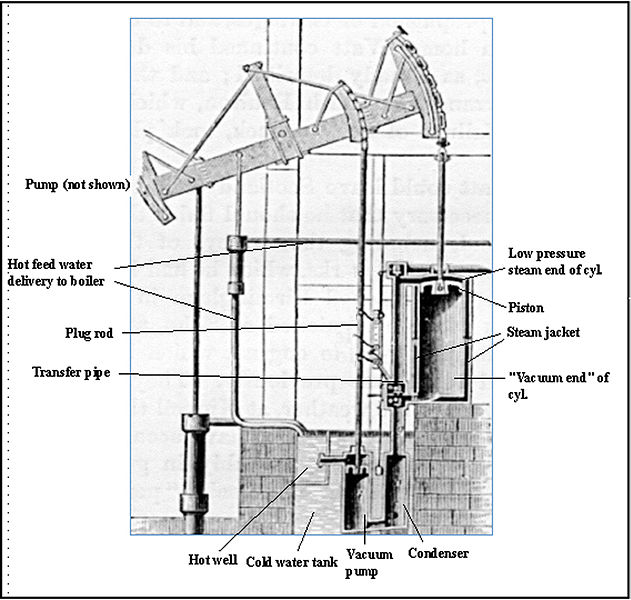History
of Water Turbines
The history of water turbines goes back quite a long ways. The famous Swiss mathematician Leonard Euler and his son experimented with reaction wheels. In 1826 Jean-Victor Poncelet of France developed some ideas on an inward-flowing radial turbine. He never entered the stage but his ideas were a big step towards the modern water turbine. In 1838 the largest contribution to water turbines came. James B Francis added stationary guide vanes and shaped the blades so that water could enter shock-free at the correct angle. Today this turbine design is still the most popular. Lester Allan Pelton developed a very efficient water turbine in the 1870’s that extracted most of the waters kinetic energy[7].
 Pictured
here is a Pelton wheel courtesy of wikipedia.org
Pictured
here is a Pelton wheel courtesy of wikipedia.org
Over the years
many extraordinary men developed new designs for water
turbines. In 1882 in
Appleton, Wisconsin a hydroelectric central station was
built. This station
produced 12.5 kilowatts and was used to light two paper
mills and a house. The
success of the Appleton hydroelectric station sparked a
spread of water turbine
technology. The technology though wasn’t able to produce
more that a few
hundred kilowatts of power until the 1930’s. When the
Hoover Dam opened in 1936
it operated using 17 Francis turbines capable of
delivering from 40,000 to
130,000 kilowatts of power, along with two
3,000-kilowatt Pelton wheels[7].

Courtesy of
http://www.americaslibrary.gov/jb/gilded/jb_gilded_hydro_1.html
This picture displays
the dam across Fox River in Appleton, Wisconsin,
the site of the first hydroelectric power plant in the
world
History of Steam Turbines
The road to the modern steam engine
was a long one. James Watt is credited with the largest
contributions to steam engine
technology. While Watt was repairing a steam engine, he
noticed a basic design flaw:
Time, steam and fuel were wasted
by having both
heating and cooling take place inside the piston
cylinder. He then
developed a separate condenser to fix this problem.
He added a chamber separate from the
cylinder (which he also insulated), where steam would
be cooled to create the
necessary vacuum. This separation allowed the piston
cylinder to remain the
same temperature as the entering steam with no energy
wasted heating it and the
water inside. He also created the
fly-ball governor. This governor created a method to
shut and open steam valves
to a piston.
Watt's
steam engine courtesy of wikipedia.org

Watt’s work set the stage for steam power technology. Watt dominated the steam engine market and created a monopoly with his engine protected by strict patents. Inventors soon started seeking to get into the market without using Watt’s engine echnology. Inventor Richard Trevithick set out on the task to create a new and original steam engine. Trevithick’s idea was to do away with the separate condenser Watt used by using high pressured steam. Trevithick's new Cornish Engine was cheaper, lighter and smaller than Watt’s engine. Arthur Woolf further improved the use of high-pressure steam in 1804 by the idea of compounding. Compounding allows the use of excess steam from one piston to fire another piston and so on.
Steam technology kept growing and
growing and eventually found its way to locomotives and
boats. In the 1830’s
Michael Faraday burst on the scene with his electric
generator called the dynamo. With this invention
other inventors
set out to find a steam engine that could provide the
rotary motion needed to
generate electricity. When steel technology advanced,
turbines were no able to
be built to withstand the rapid rotary motion to
generate electricity. British
engineer Charles Algernon Parsons put new steel
technology to use. He created a
turbine capable of using compounded steam that turned a
dynamo at 18,000
revolutions a minute.
